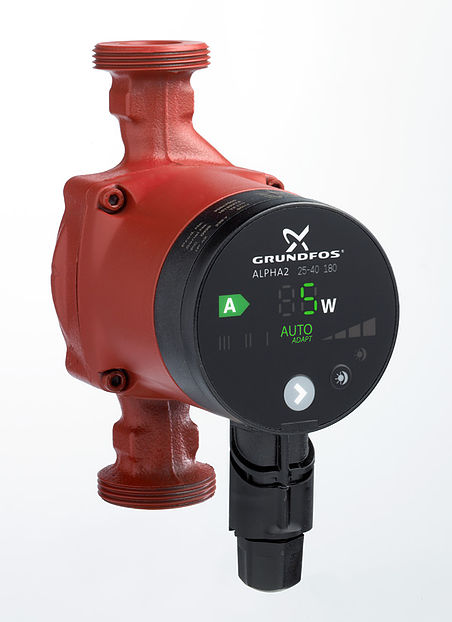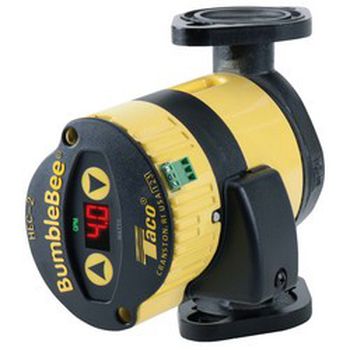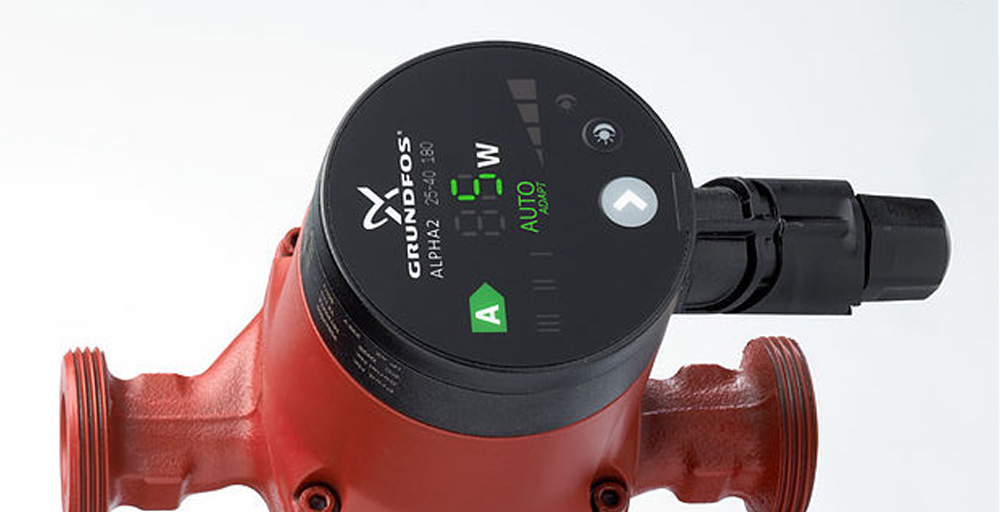Smart Circulators Add Comfort, Reduce Cost
An exciting trend has been developing over the last several years in the HVAC industry, and it is having a direct impact on home comfort as well as life cycle cost for homeowner and building owners.
Electronically Communicated Motors (ECM’s) are being used on many applications these days and the technology is ever expanding. ECM’s are standard on most forced air furnaces and air handlers, offering variable fan speeds, greater motor efficiency, and a greatly reduced operating cost.
ECM-powered smart circulators for boilers and hydronic systems have been on the market for several years, but used very little. We are seeing a trend to these circulators as the technology gets more user friendly and the heating systems are designed around the ability to better manage flow and differential pressure.
 A good way to think about a smart circulator is in relation to the pump curve. A standard circulator has a pump curve that looks like a curve. The flow of the circulator is determined by system head (Ft). Some explain circulator head simply as the height to which a pump can lift and maintain a column of water. Others define it as the pressure difference the circulator can produce between its inlet and discharge ports. Bottom line is that a standard pump’s curve is linear and it will perform only to that pump curve.
A good way to think about a smart circulator is in relation to the pump curve. A standard circulator has a pump curve that looks like a curve. The flow of the circulator is determined by system head (Ft). Some explain circulator head simply as the height to which a pump can lift and maintain a column of water. Others define it as the pressure difference the circulator can produce between its inlet and discharge ports. Bottom line is that a standard pump’s curve is linear and it will perform only to that pump curve.
Enter the ECM-smart circulator. Since the motor speed is indefinite, the pump curve changes. Instead of a linear curve, it is actually a region, and the pump can perform anywhere in that region. So, if the system head changes (for instance, when a zone valve closes), the pump will maintain a programmed performance. The same change would affect the standard circulator negagively – if a zone valve closes, the system head will increase and the overall flow rate will decrease, but it will not decrease proportionate to the needs of the system and the system could experience more flow than needed or desired. This situation can create flow noise, erode valves and piping, and cause bleed through of the zone valves that are off.
ECM-smart circulators can compensate for this situation in a few ways, depending on the brand of circulator. One common way is by maintaining a constant pressure differential – when the system head changes, the circulator modulates the motor to compensate for that change. The result is that the overall system pressure is maintained, which directly relates to flow, and the pump acts as if the pump curve is perfectly flat.
 Another way the ECM-smart circulator can compensate for a system head change is by maintaining a temperature differential – the pump modulates the flow to maintain a perfect heat transfer throughout the system. This could be very advantageous because it guarantees the perfect GPM to match the heat demands. For instance, say 4 zones are calling for heat and the pump is set to maintain a 20 degree temperature differential (Delta T). In order to accomplish this the pump is flowing at 10 GPM. Now 2 of the 4 zones stop calling for heat, but the two that remain are larger zones with a lot more baseboard or radiant tubing. The pump may still flow 6 GPM to maintain the 20 degree Delta T. Or if it was the opposite, the two remaining are small zones. In that case, perhaps 2 GPM is all that is needed to maintain the 20 degree Delta T. These pumps can adapt to any situation the system may encounter.
Another way the ECM-smart circulator can compensate for a system head change is by maintaining a temperature differential – the pump modulates the flow to maintain a perfect heat transfer throughout the system. This could be very advantageous because it guarantees the perfect GPM to match the heat demands. For instance, say 4 zones are calling for heat and the pump is set to maintain a 20 degree temperature differential (Delta T). In order to accomplish this the pump is flowing at 10 GPM. Now 2 of the 4 zones stop calling for heat, but the two that remain are larger zones with a lot more baseboard or radiant tubing. The pump may still flow 6 GPM to maintain the 20 degree Delta T. Or if it was the opposite, the two remaining are small zones. In that case, perhaps 2 GPM is all that is needed to maintain the 20 degree Delta T. These pumps can adapt to any situation the system may encounter.
And of course, there is the situation of energy savings. Some refer to the ECM motor as a brushless DC motor. Each time the speed decreases, so does it’s electrical usage. The same is not true with standard multi-speed circulators or even fan motors for that matter. In those motors, the speed is reduced by voltage reduction through added motor windings. So, much like a light bulb dimmer, the motor speed reduces but the power usage does not. The exact electrical savings for an ECM motor depend greatly on the amount of time the motor runs at a reduced speed, but many speculate that an average savings that a homeowner can experience is 60%. Over the course of the life cycle of the circulator, this will translate in the hundreds of dollars.
KLEBS sees the ECM-Smart circulator as a great option for any hydronic system. Controls and systems are getting smarter every day, and we are excited to see this technology develop.
